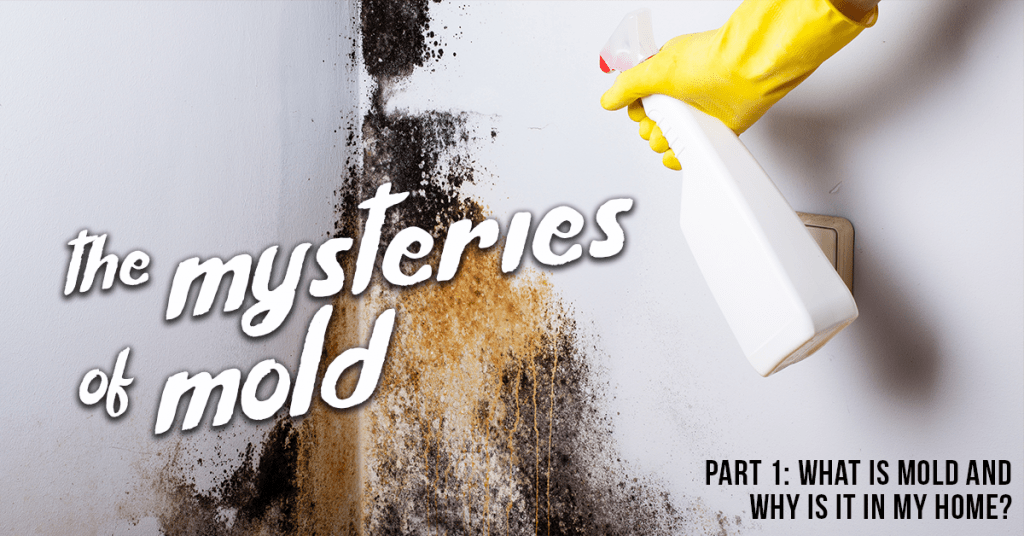There are elements of our natural world that are sweet and pleasant, while others tend to be more detrimental. With the negative health effects… mold happens to fall closer to the later.

Molds are part of the natural environment in which we live. Outdoors, mold plays an active role to break down and decompose dead, organic matter such as fallen leaves, dead trees, and other vegetation. This is important in the regeneration of soil and the natural cycle of organisms. However, indoors, mold has no true responsibility or proposes, and in fact, can have serious negative health impacts.
There are several types of mold, and it can appear in several different colors. Molds produce allergens, irritants, and potentially toxic substances (mycotoxins) that, when inhaled or touched, may cause reactions. Some responses include hay fever-like symptoms such as sneezing, running nose, red eyes, and rash. People with asthma can suffer an asthmatic attack when confronted with mold. The most common types of mold include aspergillus, cladosporium and stachybotrys atra (black mold).
Aspergillus is an allergenic mold that is commonly found on foods and in home air conditioning systems. Cladosporium is typically a black or green “pepper-like” substance that grows on the back of toilets, painted surfaces, and fiberglass air ducts. While this type is non-toxic to humans, it can trigger common allergy symptoms, such as red and watery eyes, rashes and a sore throat. Mold that appears to be orange or red in color is typically found outdoors, given its nature to thrive on decaying plants or moist wood. This type, which can appear slimy, is harmless and should only be removed for aesthetic purposes.
So how does it get inside your home in the first place? Molds reproduce by tiny, spores that are invisible to the naked eye and can float through the air. It can begin growing inside when the spores land on wet or moist surfaces, bear in mind that surface may be hidden, such as inside of a wall, cavity or cabinet. If you suspect mold or need help to remedy it, we can help. Contact us here or call 866-934-2374 for Mold Inspection and Testing.
The key to mold control is in moisture control. In Part 2 of our series, we will uncover ways to remove mold and keep it from returning.
